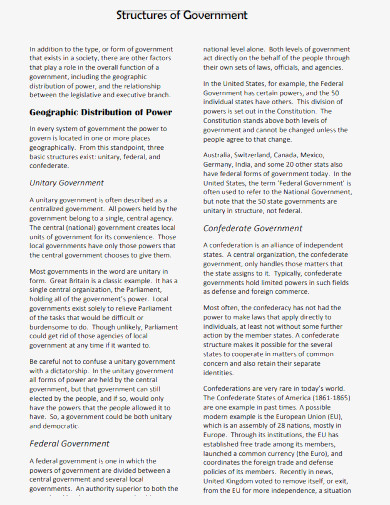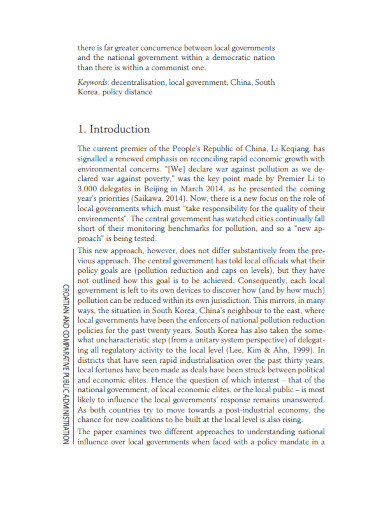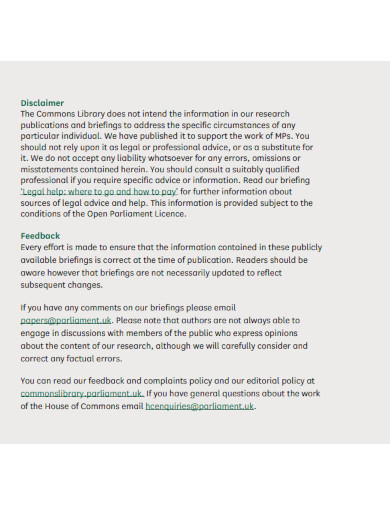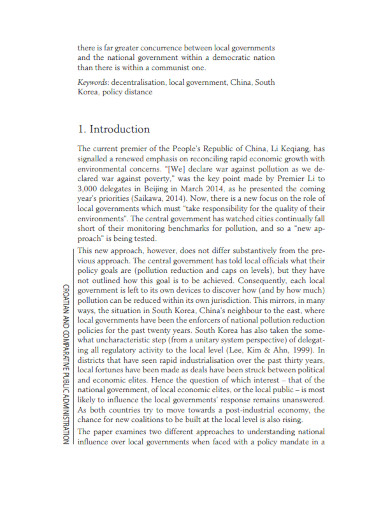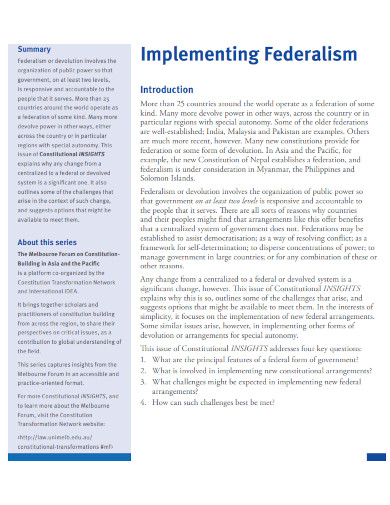6+ Unitary Government Examples to Download
Each country has its type of government to provide different types of laws based on the social context and the current situations around the world, like climate change. One of these types of government is called the unitary government.
1. Unitary Federal Government
2. Unitary Structures of Government
3. Decentralising Unitary Governments
4. Merits of Unitary Government
5. Unitary Local Government
6. Decentralized Unitary Government System
7. Unitary Government Implementing Federalism
What Is a Unitary Government
A unitary government is a specific government structure that has a centralized government structure acting as the core of the country. Many merits of a unitary government cannot be observed in different types of government. If you want to learn more about unitary governments, you may read up on any of the articles named Decentralising Unitary Governments, Decentralized Unitary Government System, and Unitary Government Implementing Federalism on the links above.
How To Identify If the Country’s Government Structure is Unitary
When a country adopts a unitary form of government, it has a specific structure that is very easy to spot and factor in. It is important to know what type of government structure the country you live in adopts as it can determine the types of laws you will have to follow. Not only that it is good to be informed of the various government structures that have affected one’s ethnicity or ethnic group.
Step 1: Research On the Country’s Government
Begin by researching the specific country’s government. This will allow you to obtain the details you will use to cross-reference whether or not the country has a unitary government.
Step 2: Determine if the Government Body is Centralized
First, you must check if the government’s body is mostly centralized. This means that all the different legislative, judicial, and executive branches are centered around one singular body in the government. If this is the case, then the country might be adopting a unitary government structure.
Step 3: Check If Policies are Uniform in All Governments and Are Created by The Central Government Body
Another way to determine whether or not a country has a unitary government structure is to check on how the policies and laws are created. Not only that but a unitary government will make these laws uniform.
Step 4: Determine if Local Governments Have any Power
Local government bodies will have little to no power in a unitary government. This means that if a country’s local government cannot make divisions to alter the local laws of their community, then the country has adopted a unitary government structure.
FAQs
Unitary vs. federal government; what is the difference between a unitary and a federal government
A type of administration known as the unitary government is one in which the whole government is under the jurisdiction of a single power, known as the central government. In actuality, the center of all authority is where all administrative divisions and powers are located. The majority of the world’s governmental structures today are based on the unitary system. While a federal government is a sort of national government that has the authority to transfer authority to other elected state representatives. A nation’s federal government may function at two different levels or through shared institutions. One of the key distinctions between the two is that under a centralized government, decision-making authority is concentrated, as opposed to a federal one, where it is shared.
What are real-life examples of countries with a unitary government?
There are many real-life examples of countries that are currently exhibiting a unitary government structure. These countries include the United Kingdom (UK), China, Italy, Japan, and Spain. Not only that but some of these countries bear historical evidence of a unitary government called sovereignty. Examples of sovereignty include the royal family of the United Kingdom and the Emperor of Japan and his family.
Who has the most power in a unitary system?
A Unitary System has the highest degree of centralization when compared to other different types of states. During a unitary state, the central government holds all the facilities. Lower-position governments, if they live at all, do nothing but apply the programs of the general public government. during a strictly unitary state, a constant set of laws applies throughout the state, with little to no variation.
A unitary government is a type of government a country can adopt that allows a single united body to mandate and create all the laws that will affect the country. Not only that but the main body of unitary government will create lower levels to help apply the laws to the citizens based on their specific functions.




